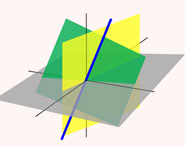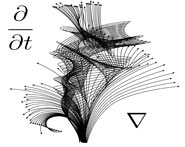


 تاريخ الرياضيات
تاريخ الرياضيات
 الرياضيات في الحضارات المختلفة
الرياضيات في الحضارات المختلفة 
 الرياضيات المتقطعة
الرياضيات المتقطعة
 الجبر
الجبر
 الهندسة
الهندسة 
 المعادلات التفاضلية و التكاملية
المعادلات التفاضلية و التكاملية 
 التحليل
التحليل
 علماء الرياضيات
علماء الرياضيات |
Read More
Date: 4-5-2022
Date: 17-3-2022
Date: 8-4-2022
|
Two nonisomorphic graphs are said to be chromatically equivalent (also termed "chromically equivalent by Bari 1974) if they have identical chromatic polynomials. A graph that does not share a chromatic polynomial with any other nonisomorphic graph is said to be a chromatically unique graph.
The chromatically equivalent simple graphs on five or fewer vertices are illustrated above.
Bari (1974) gives a number of chromatically equivalent graph pairs on 11 to 17 vertices that are planar triangulations.
It appears to be the case that all resistance-equivalent graphs are also chromatically equivalent.
Bari, R. A. "Chromatically Equivalent Graphs." In Graphs and Combinatorics (Ed. R. A. Bari and F. Harary). Berlin: Springer-Verlag, pp. 186-200, 1974.
Bari, R. A. "Recent Results on Chromatically Equivalent Graphs." In Second International Conference on Combinatorial Mathematics (New York, 1978). Ann. New York Acad. Sci. 319, 37-46, 1979.



|
|
|
|
لشعر لامع وكثيف وصحي.. وصفة تكشف "سرا آسيويا" قديما
|
|
|
|
|
|
|
كيفية الحفاظ على فرامل السيارة لضمان الأمان المثالي
|
|
|
|
|
|
|
شعبة مدارس الكفيل: مخيَّم بنات العقيدة يعزِّز القيم الدينية وينمِّي مهارات اتخاذ القرار لدى المتطوِّعات
|
|
|